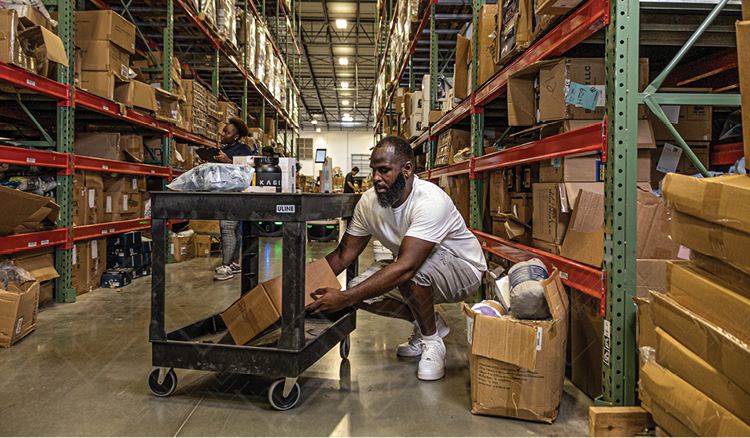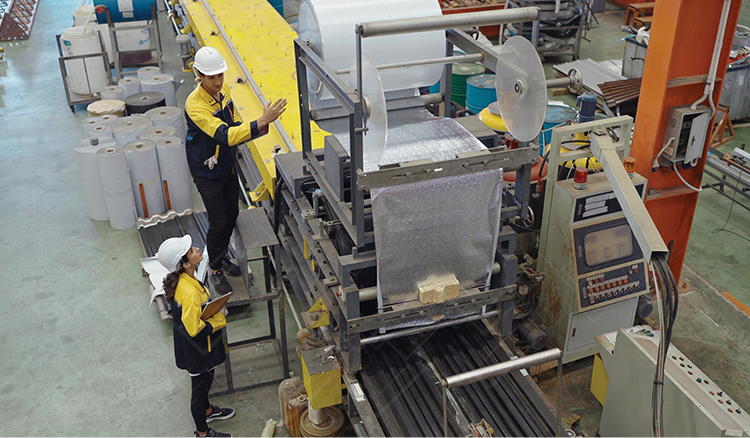Reaching Sidelined Workers with Flexible Work Options
Companies in the US have faced challenges finding workers for the past few years. This is partially due to the pandemic, but inflation, commodity prices, and shifting expectations about work are trends that will continue to make the labor market challenging.
Veryable’s founder and CEO Mike Kinder wrote in 2016 about the labor force participation rate and the alarms this should sound in the manufacturing and logistics industries. Reversing this trend is a necessary step to revitalizing US manufacturing, and there’s more work to do now than ever.
In this article, we’ll explore the idea that sidelined workers just need the right opportunities to participate in the workforce. You’ll learn how they’ve been left out and how solutions like on-demand labor help fill the gaps.
Sidelined workers have few opportunities that fit their schedule
Workers who don’t have childcare, have special medical needs, or must care for an elderly family member might have few options for work that fits their schedule.
During the pandemic, we saw where the opportunities are for making work more accessible and flexible. Many companies wrestled with lockdowns and social distancing. As a result, they have implemented more ways to meet workers where they are so that work can carry on around their lives.
Whether this is temporary or a permanent shift remains to be seen. Either way, the forced acceleration in the direction of flexibility revealed that many jobs haven’t found ways to be flexible yet. This is especially true in skilled trades where the work can’t be done remotely.
Beyond the pandemic, flexibility could be the name of the game as workers come to expect more of it from employers. We’re already seeing wage pressures from workers, so the demands growing to include flexible schedules is not far fetched. Survey after survey shows that most employees prefer at least a mixture of office and remote work.
The labor market as a whole might respond to these pressures. In that case, the skilled trades might have to find ways to match those flexible offerings to attract workers. This won’t come in the form of remote work, but could mean new ways of planning work and scheduling workers.
In a time when the US has a great need for trade workers, this shift presents a huge opportunity.
The changes to introduce more flexibility in manufacturing and logistics would be a net positive. Many people will still want full-time employment and full-time income from a single source. But remember those workers with limitations on their schedule that are entirely unrelated to the pandemic? And what about workers that don’t want to work for just one company because they’ve seen that no job is guaranteed forever? They’ll all still be there when everything goes “back to normal,” so there will still be an opportunity to bring them off the sidelines and into the workforce.
Aside from the boon this would be to our economy, work opportunities in industries like manufacturing and logistics could be a source of pride and accomplishment for workers who have been unemployed or underemployed for years.
“In addition to the purely economic benefits of a strong manufacturing sector, there is a real sentimental aspect that promotes honorable behavior: one that tends to lie in nostalgia of a prior generation,” writes Kinder. “Many Americans can remember a father, mother, or grandfather that came home from a long day at the plant, and feel a sense of pride and admiration toward that person.”
Filling the gaps in labor participation by growing access to these meaningful jobs is an important goal for our country to strive toward.
Flexible options for increasing workforce participation
Saying that we need more flexibility is one thing, but actually delivering on this is another. So how do we provide flexibility in industries like manufacturing and logistics?
Veryable believes the solution is on-demand labor. This approach benefits the businesses as much as it does the workers.
It works like this: when there’s work to be done, a manager posts the work as an opportunity that workers quickly bid on. Then the worker completes the agreed upon work.
There’s no long-term commitment for the business or worker like there would be with an employee. This also means these independent workers can build their own schedule – the ultimate flexibility.
Businesses maintain a reliable source of labor by adding the workers they like to a favorites list that we call a labor pool. This labor pool lets businesses and workers establish a relationship while maintaining flexibility. The business has a pool of reliable workers they can call on for short-term work when necessary. And the workers maintain control of their own schedules.
With on-demand labor, formerly sidelined workers can find skilled work that fits their schedule. And businesses can more accurately match their capacity to the actual demand they’re seeing day to day. This creates a win-win situation.
You can reach your business goals and bring workers off the sidelines with Veryable. In doing so, you’ll be part of revitalizing US manufacturing. Start by learning why workers use Veryable, what that means for your business, and what real Veryable Operators are like in our closer look at workers using Veryable.
Previous Posts
How Policy Constraints, Not Just Production Bottlenecks, Threaten Your Bottom Line
The Future of Manufacturing and Logistics
Create a free business profile today to explore our platform.






